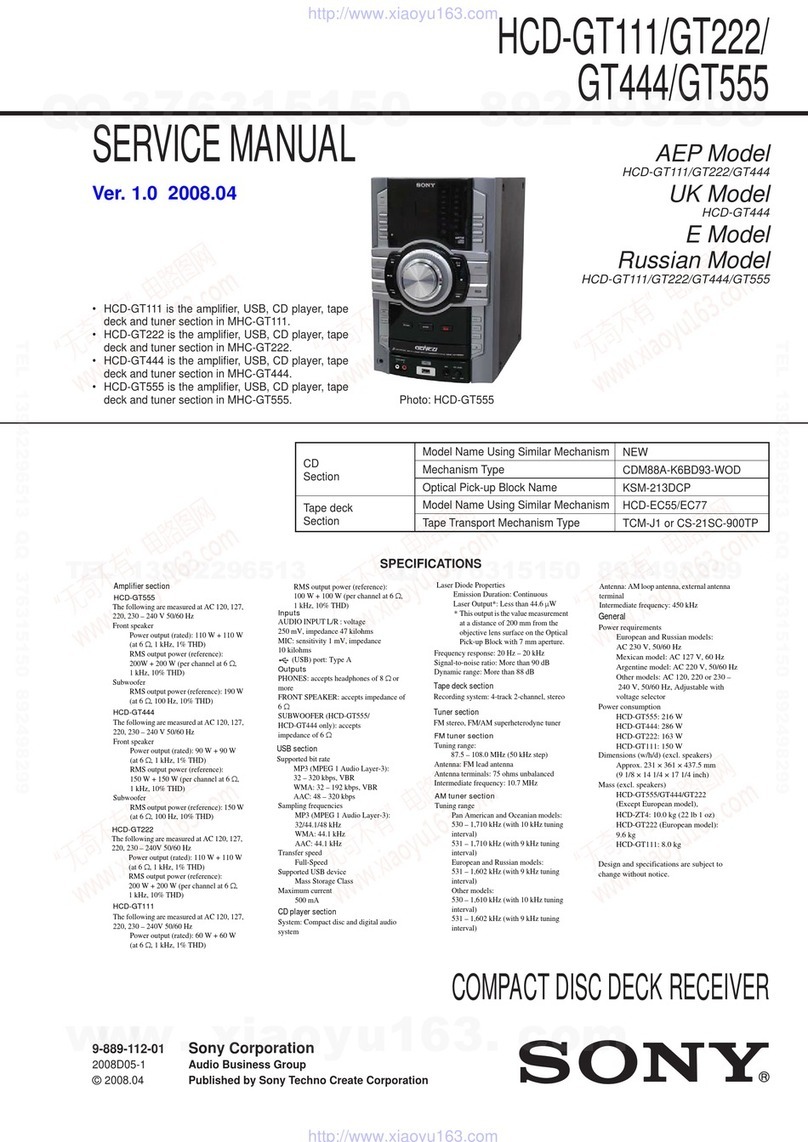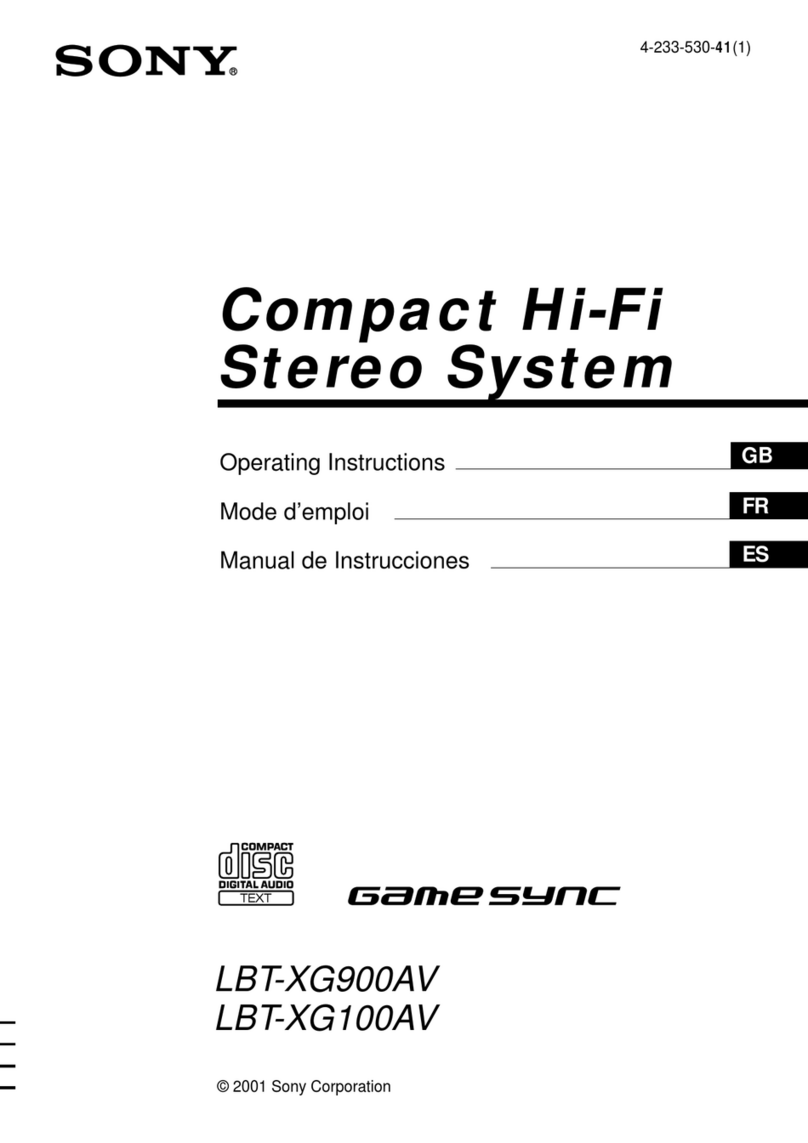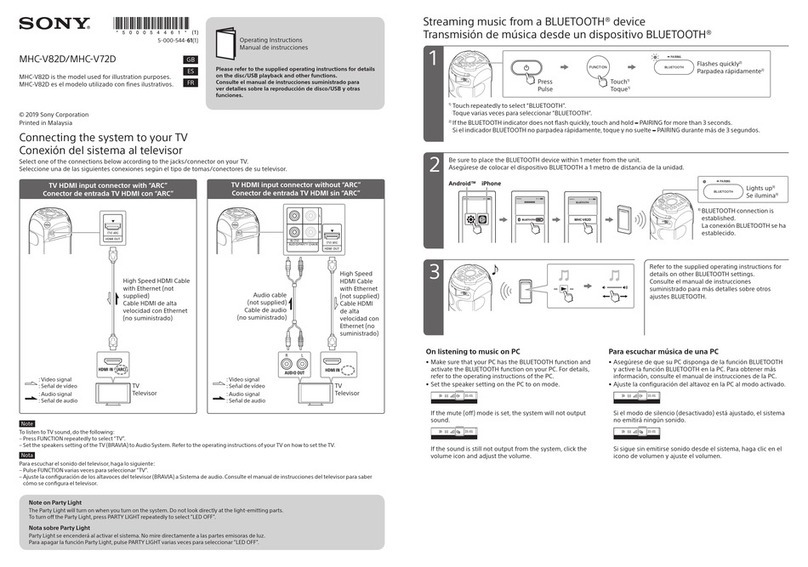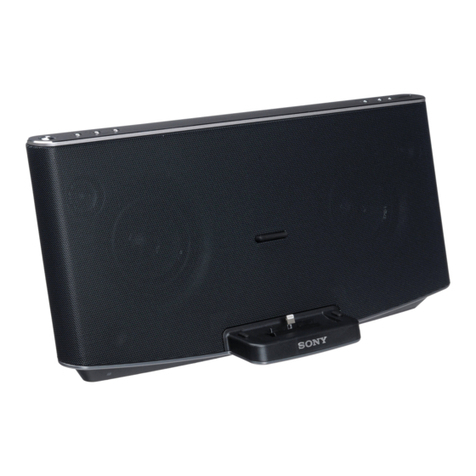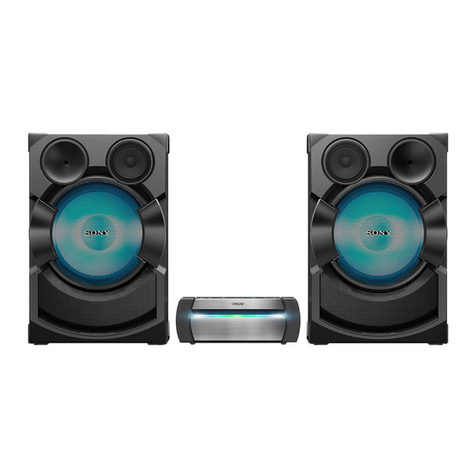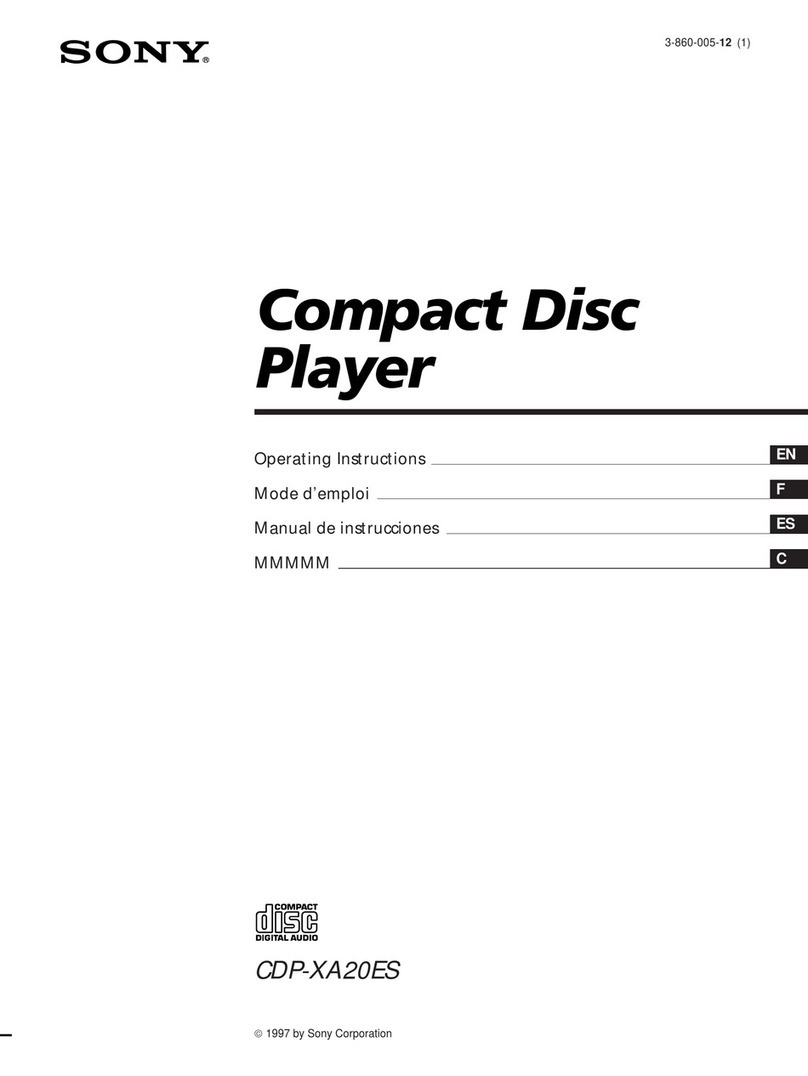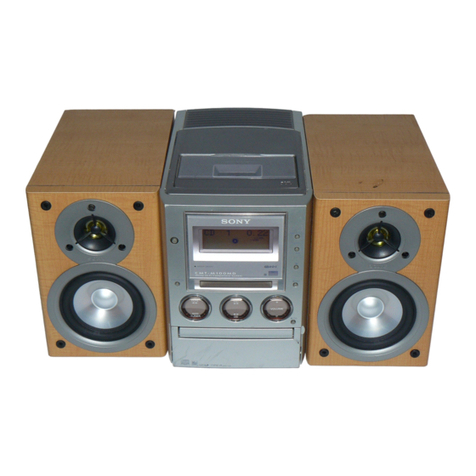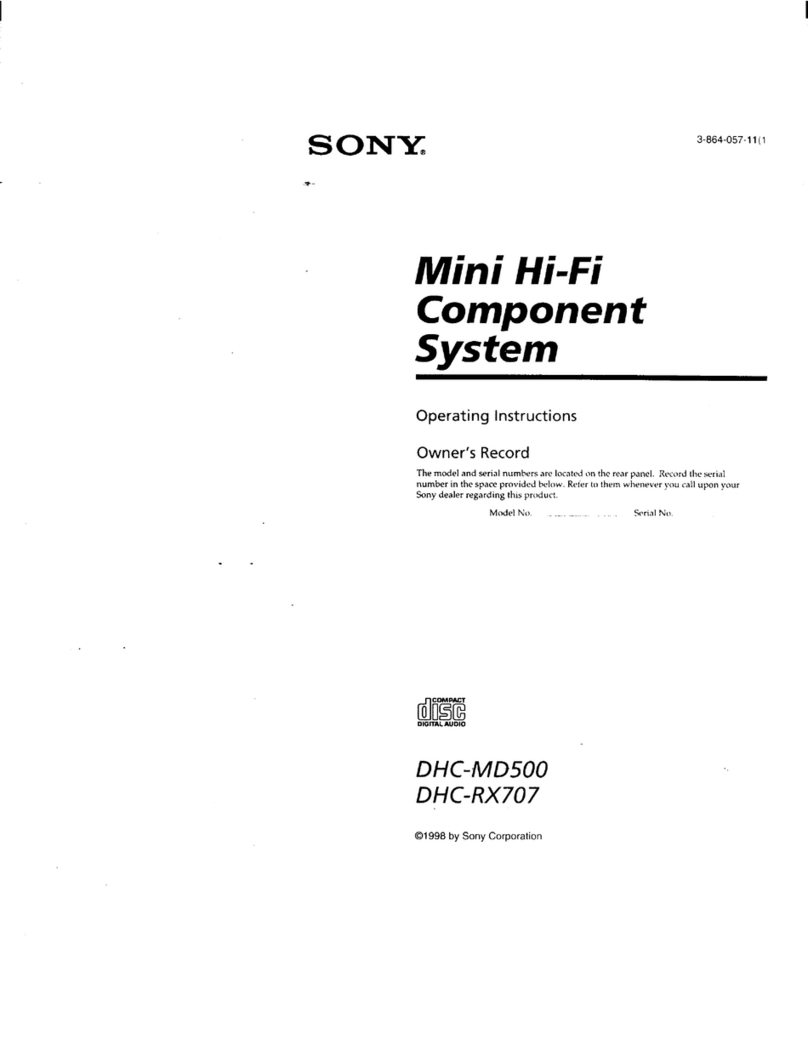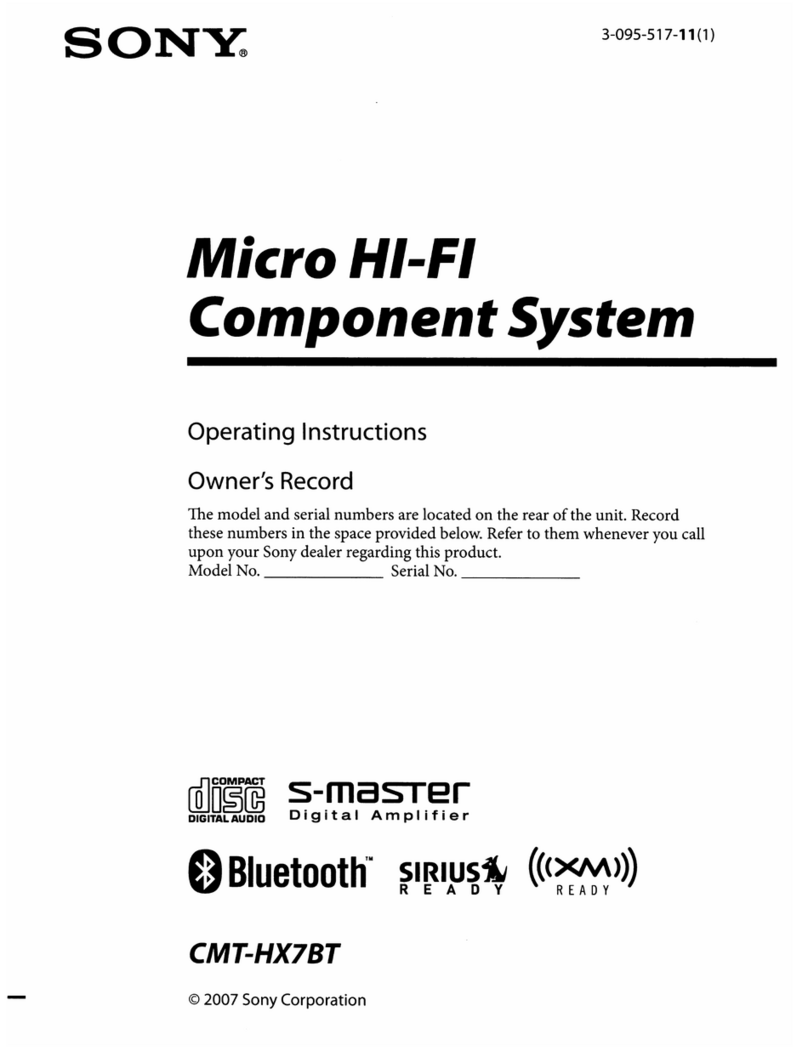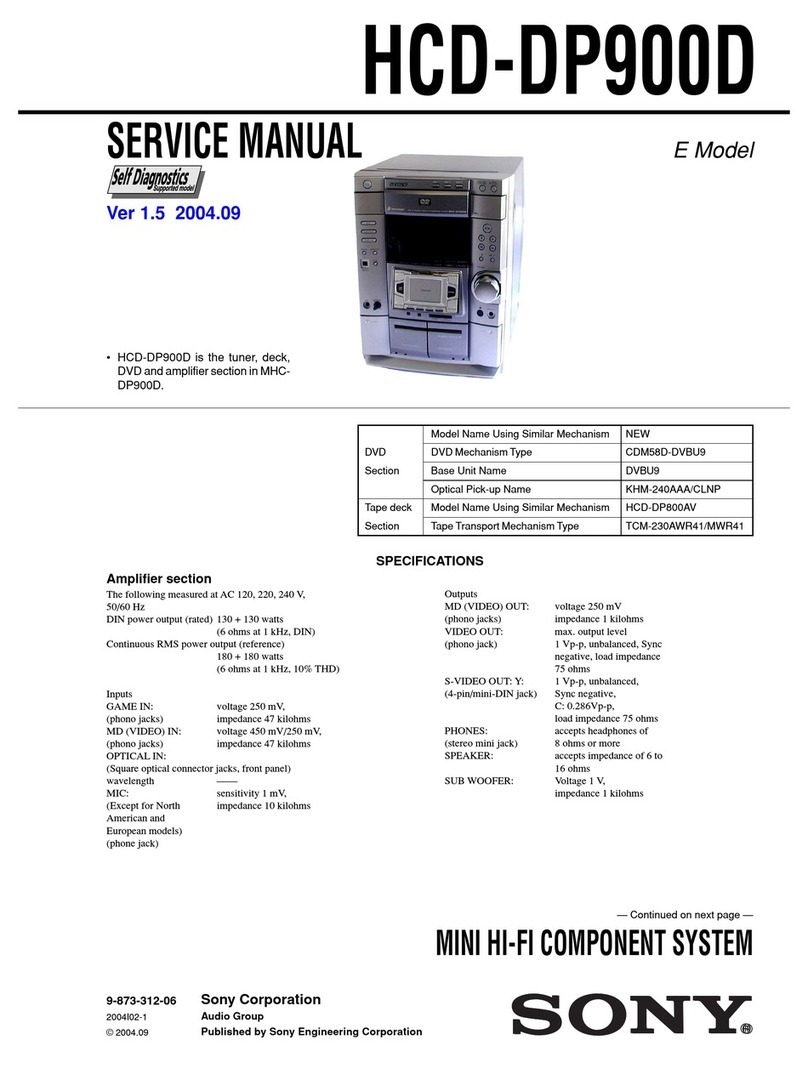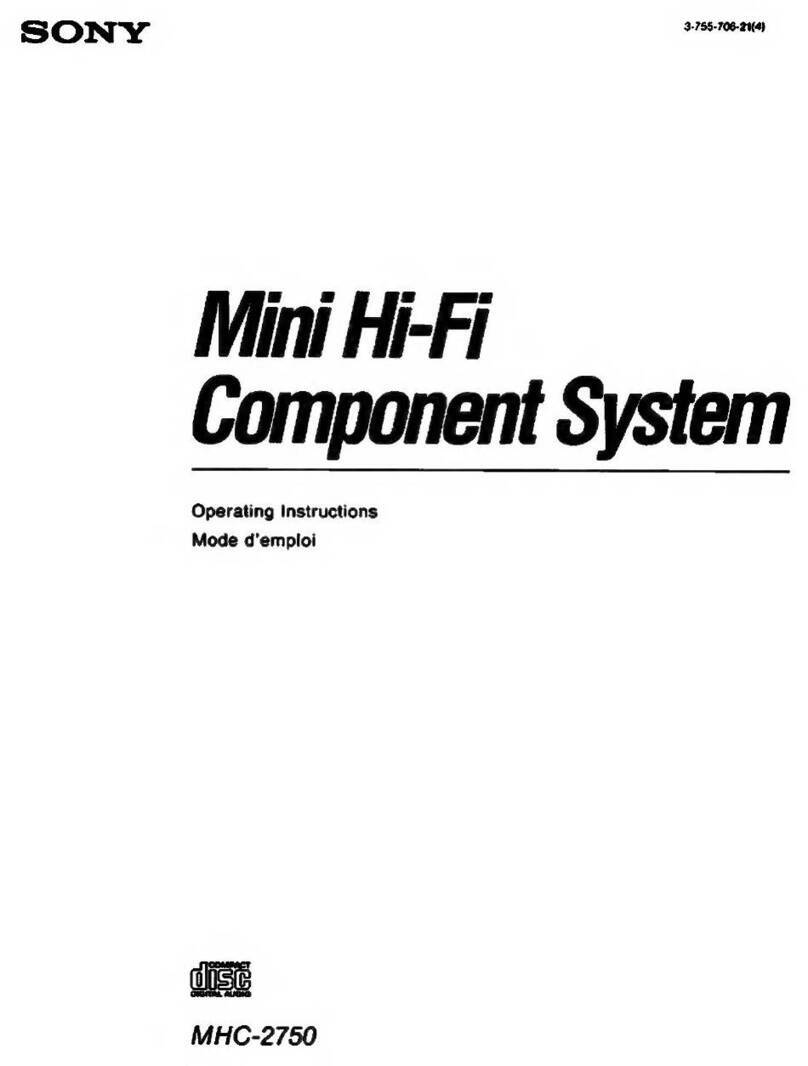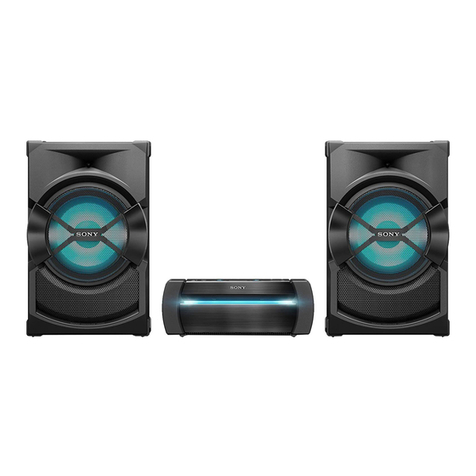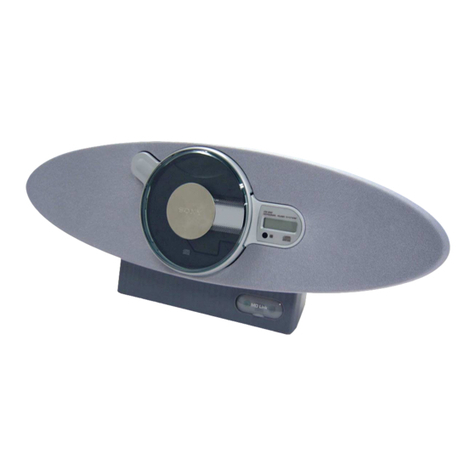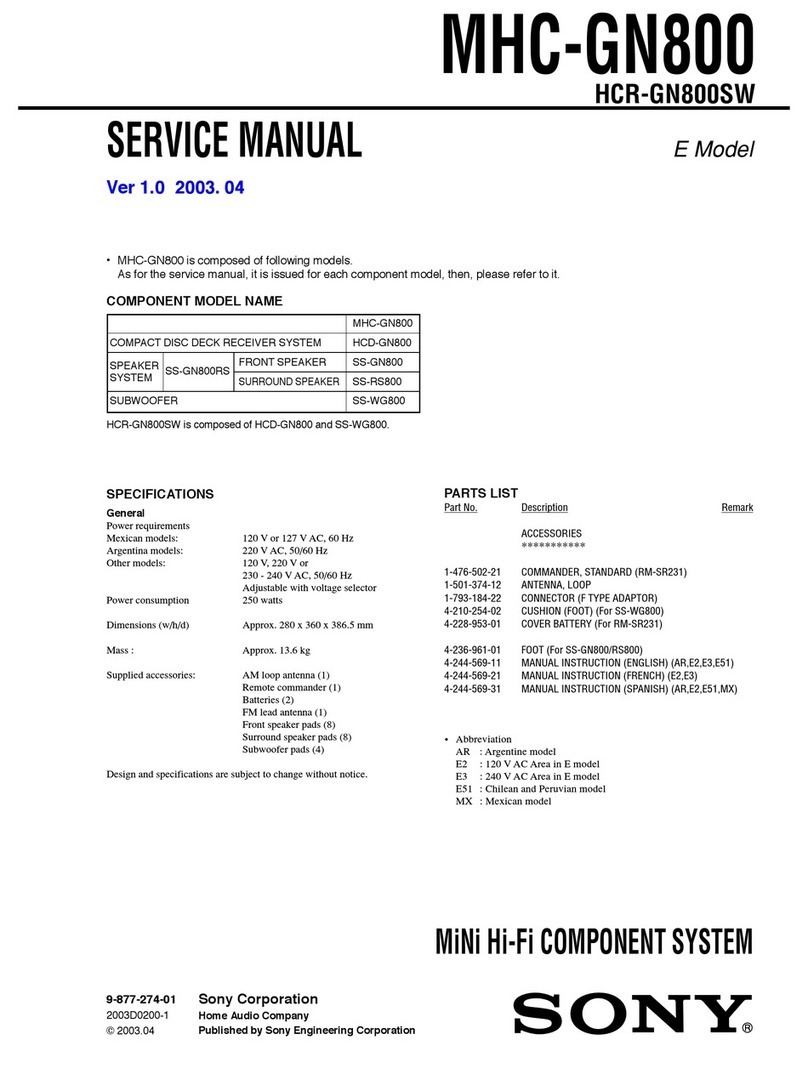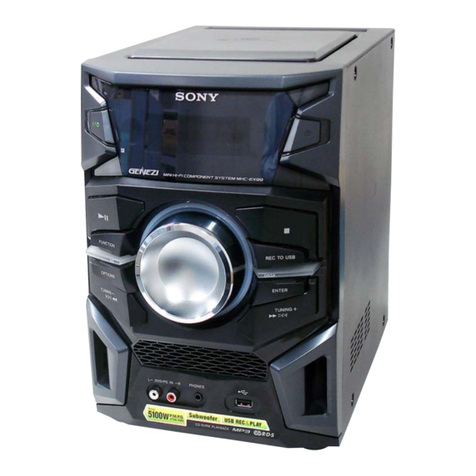
— 3 —
TABLE OF CONTENTS
1. GENERAL .......................................................................... 4
2. DISASSEMBLY
2-1. Front Panel ........................................................................... 5
2-2. Main Board ........................................................................... 6
2-3. Tape Mechanism Deck.......................................................... 6
2-4. Cassette Lid Assembly .......................................................... 7
2-5. CD Lid assembly................................................................... 7
2-6. CD Mechanism Deck ............................................................ 8
2-7. Base Unit ............................................................................. 8
2-8. Disc Table ............................................................................. 8
3. SERVICE MODE ........................................................9
4. MECHANICAL ADJUSTMENTS .......................... 11
5. ELECTRICAL ADJUSTMENTS ............................... 11
6. DIAGRAMS
6-1. Circuit Boards Location ...................................................... 18
6-2. Brock Diagrams
• Tuner Section (AEP, UK model) ..................................... 19
• Tuner Section (East European, CIS model)..................... 21
• CD Section ....................................................................... 23
• Deck Section .................................................................... 25
• Main Section .................................................................... 27
• Power Section .................................................................. 29
6-3. Printed Wiring Board —CD Section —.............................. 31
6-4. Schematic Diagram — CD Section — ............................... 33
6-5. Printed Wiring Board
—Tuner (AEP, UK model) Section —................................ 36
6-6. Schematic Diagram
—Tuner (AEP, UK model) Section —................................ 37
6-7. Schematic Diagram
—Tuner (East European, CIS model) Section — ............... 39
6-8. Printed Wiring Board
—Tuner (East European, CIS model) Section — ............... 41
6-9. Printed Wiring Board — Main Section —.......................... 42
6-10. Schematic Diagram — Main Section — .......................... 45
6-11. Schematic Diagram — Deck Section —.......................... 49
6-12. Printed Wiring Board — Deck Section — ....................... 53
6-13. Schematic Diagram — Panel Section — ......................... 56
6-14. Printed Wiring Board — Panel Section —.......................59
6-15. Schematic Diagram — Power Section — ........................ 63
6-16. Printed Wiring Board — Power Section — ..................... 67
6-17. Schematic Diagram — CD Motor Section —.................. 70
6-18. Printed Wiring Board — CD Motor Section — ............... 71
6-19. IC Block Diagrams ........................................................... 73
6-20. IC Pin Functions ............................................................... 80
7. EXPLODED VIEWS
7-1. Case and Back Panel Section .............................................. 89
7-2. Front Panel Section 1 .......................................................... 90
7-3. Front Panel Section 2 .......................................................... 91
7-4. Chassis Section ................................................................... 92
7-5. TC Mechanism Section 1 (TCM-220WR2)........................93
7-6. TC Mechanism Section 2 (TCM-220WR2)........................94
7-7. TC Mechanism Section 3 (TCM-220WR2)........................95
7-8. CD Mechanism Section (CDM37L-5BD29AL) ................. 96
7-9. Base Unit Section (BU-5BD29AL) .................................... 97
8. ELECTRICAL PARTS LIST ........................................ 98
NOTES ON HANDLINGTHE OPTICAL PICK-UP BLOCK
OR BASE UNIT
The laser diode in the optical pick-up block may suffer electrostatic
break-down because of the potential difference generated by the
charged electrostatic load, etc. on clothing and the human body.
During repair, pay attention to electrostatic break-down and also
use the procedure in the printed matter which is included in the
repain parts.
The flexible board is easily damaged and should be handled with
care.
NOTES ON LASER DIODE EMISSION CHECK
The laser beam on this model is concentrated so as to be focused on
the disc reflective surface by the objective lens in the optical pick-
up block. Therefore, when checking the laser diode emission, ob-
serve from more than 30 cm away from the objective lens.
LASER DIODE AND FOCUS SEARCH OPERATION
CHECK
Carryout the “S curvecheck” in “CD sectionadjustment” and check
that the S curve waveform is output three times.
SAFETY-RELATED COMPONENTWARNING !!
COMPONENTS IDENTIFIED BY MARK !OR DOTTED LINE
WITH MARK !ON THE SCHEMATIC DIAGRAMS AND IN
THE PARTS LIST ARE CRITICAL TO SAFE OPERATION.
REPLACE THESE COMPONENTS WITH SONY PARTS
WHOSE PART NUMBERS APPEAR AS SHOWN IN THIS
MANUAL OR IN SUPPLEMENTS PUBLISHED BY SONY.
www.freeservicemanuals.info

